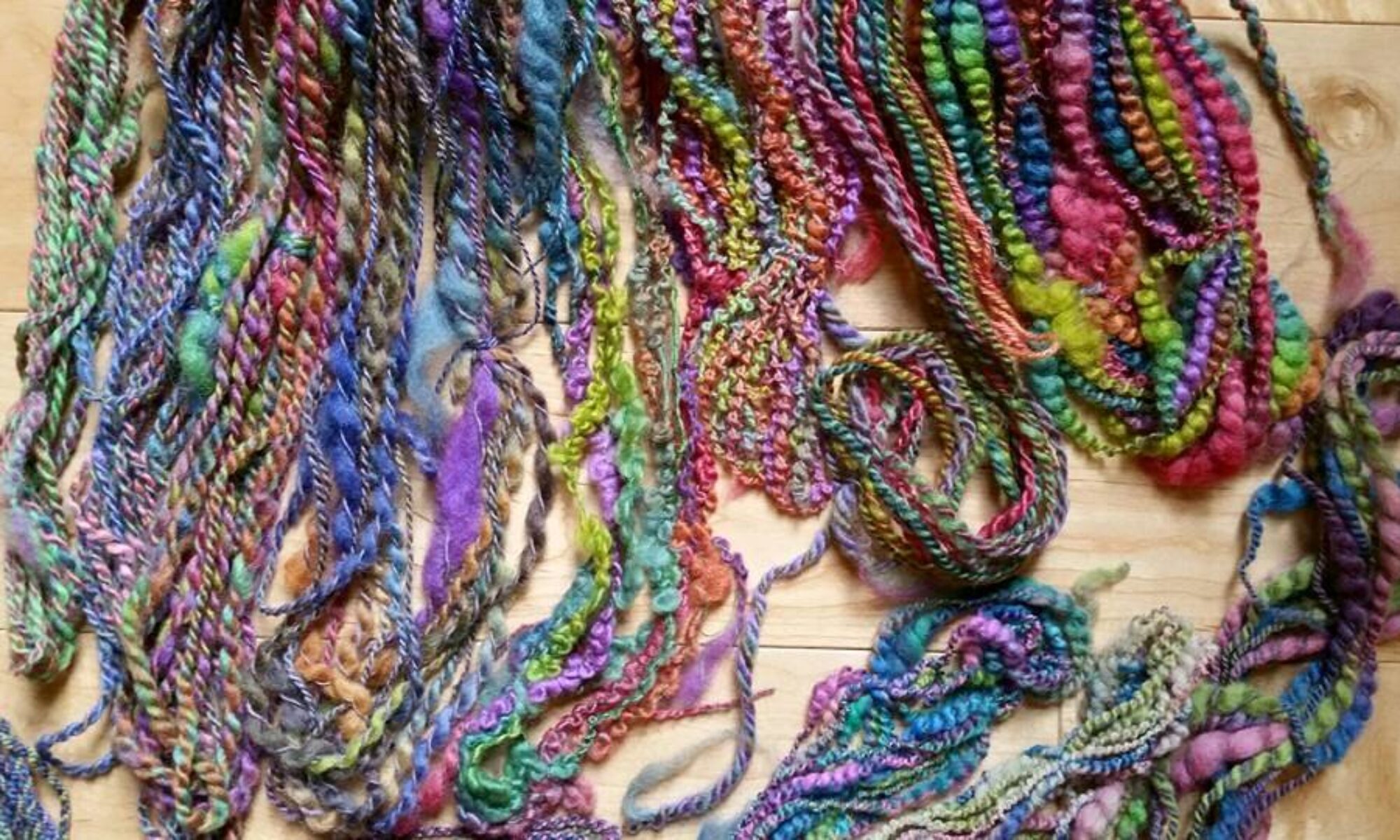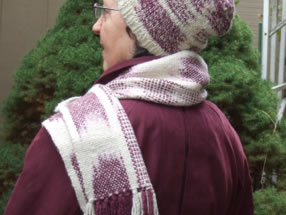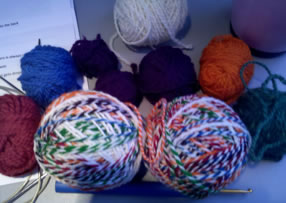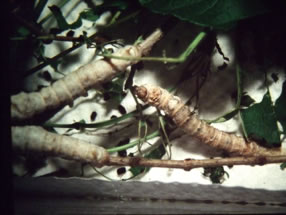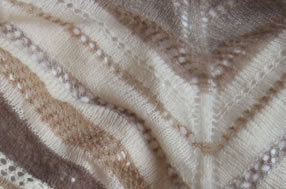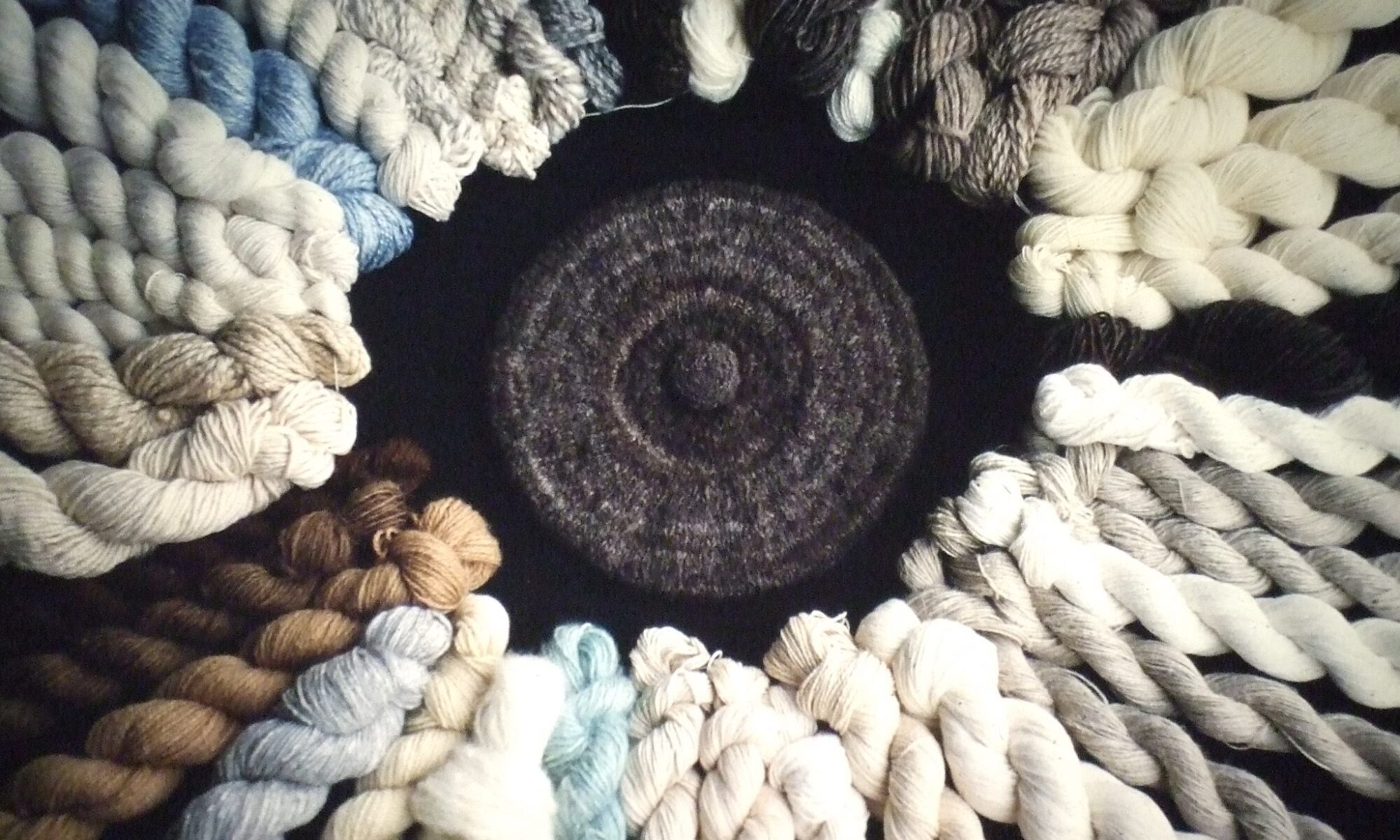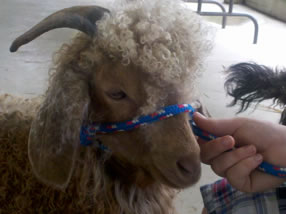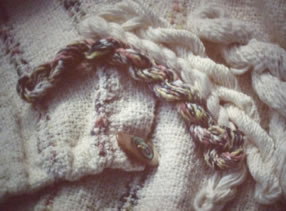Many spinners are wary of using their yarns when weaving. There are ways to guarantee success as you learn about the requirements of weaving yarns. Of course there are basically there are two types of yarn required, warp and weft. Most people think yarns for weft can almost any yarn like stuff, and that warp requirements are very stringent. Both statements have validity but neither statement is completely true. I will talk about the various properties of yarn and how they can be manipulated when hand spun and used for weaving. Lots of hints at warp-speed.
Using Your Yarns, A Look at One Creative Process
This PowerPoint program / show and tell, offers three questions to help start the creative process for using handspun or commercial yarn. Hints and helps are given to assist as you tame the treasures in your baskets.
I discuss several of my own creative adventures and misadventures. Hints will be given on how to do calculations; how to combine yarns and ideas. Take away encouragement and ideas to give your projects a try.
These are true tales from a classic fiberholic. I share my joys and frustrations as I encourage you to stop saving your super skeins and use them.
Sumptuous Silk the Improbable Fiber from a Hungry Worm
Silk, perhaps the most mysterious of natural fibers, is a gift from a lowly, but hungry caterpillar. In the PowerPoint I document my own chaotic story of raising silkworms.
Learn about the amazingly diverse preparations that can be found in silk and the many different ways they can be spun. There are Bombyx and wild Tussah silk fibers in expanded mawata – like hankies, caps and bells, combed tops, and carded noils.
The fibers are excellent for weaving, crocheting, and challenging for knitters but well worth the effort for working with this improbable fiber.
Manufactured Fibers and Facts for Textiles
Holographic, coated cotton, bi-component, UV color changing, stretch wool, stainless steel; are some of the descriptors for today’s weaving threads and yarns. Like the retro-reflective yarn used on my bike helmet scarf.
Our spinning baskets have fibers grandmother never heard of: Tencel™, fake cashmere, Seacell™, sparkly nylon, Eco-spun™, metallic, banana, and soy silk.
Understanding the history of these man-made fibers helps you explore the possibilities. This hands-on presentation reviews the history, forms and samples of man-made fibers and yarns on the current market. There will be plenty of fibers and yarns to feel and time for questions and answers.
You know you see these fibers in our markets, come and learn why and if you need them.
Lavish Luxury Fibers and Animals
Spinners, weavers, and all textile enthusiasts enjoy the luxury of yarns and fibers from a wide variety of animals from around the world. Understanding the animals, their fibers, and the process of making the yarns will help you make the most of your investments. These will include: camelid fibers – llama, alpaca, and camel down; goat fibers – kid mohair, pygora, and cashmere; and other fibers – angora bunny, bison, Qiviut, and yak.
Lots of reasons to indulge yourself and your senses in lavish luxury.
How Many Times Must I Turn Around to be an Excellent Spinner – the COE
The Handweavers Guild of America, HGA, maintain 4 important Certificate of Excellence, COE, programs for textile artists, weaving, spinning, dyeing and basketry. There have been several adjustments and revisions to keep the COE programs relevant in the past 40 plus years. It is one of the current mastery programs.
I hold both the Technical level and the Master’s Certificates in Handspinning. I have been participant, reviewer, revision advisor and judge in that field. My story tracks my challenges and triumphs. Samples of my work and plenty of time for questions and answers.
The COE programs encourage independent learning and mastering yourself in your chosen field.
Goats and More Goats
Goats were always considered a sign of wealth. They are one of the oldest herd animals, and at the same time one of the quickest to revert to a wild feral state if allowed.
Goats have always been important for milk, meat, and cheese. Goat hair was and is an important serviceable fiber for upholstery, carpet, rugs, tents and ropes. Cashmere on the other hand is the downy undercoat fiber. But hundreds of years back, selective breeding began for improving the hair fiber creating lustrous mohair.
Today we have a wide variety of fiber goats here in the states – pygora, cashgora, mohair, and cashmere. Learn about the many important differences so you can embrace the goats in your life.
Fascinating Flax. Blossom, Harvest, Processing and Spinning
Flax once grown in almost every home plot was synonymous with household term – linen. Today most “linens” are anything but made from linen.
A truly classy fiber when correctly cleaned and processed, spun, finished, and used in textiles. It was the only fiber deemed worthy to be used on a churches altar or perfect for the young bride.
Flax is an important historical fiber that due to its length is best spun from some of the most elegant or basic spinning tools, the distaff. Learn about this important and fascinating fiber that is becoming a shrinking industry.
Classic Cotton Fibers from Seed to Crop to Yarn
Although grown all over the world, cotton is a classic American fiber. Several varieties grow in the states, just as several controversies surround this perennial plant fiber. Cotton played a large part in shaping American history.
Cotton was at the forefront of mechanizing spinning, being the easiest and first fiber for spinning machinery. Unfortunately cotton remains one of the “scariest” fibers to spin due to its short length. Many hints on how and why to use this amazing fiber called cotton.
Adding That Special Twist – Spinning for Knitting
Many spinners are wary of using their yarns when knitting. There are ways to guarantee success as you learn about the requirements of knitting yarns. Matching density of the yarn is the biggest challenges.
I will talk about the various properties of yarn and how they can be manipulated when hand spun and used for knitting.
Spinning that very special yarn for that very special reason is well worth the effort.
